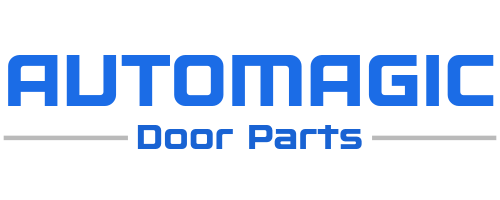
BEA IXIO-DT1 vs. HOTRON SSR-3: Choosing the Best Sensor for Automatic Sliding Doors
Share
BEA IXIO-DT1 vs. HOTRON SSR-3: Choosing the Best Sensor for Automatic Sliding Doors
Automatic sliding doors need reliable, high-quality sensors to ensure they open smoothly and safely. Among the leading products available today, the BEA IXIO-DT1 and HOTRON SSR-3 stand out, each using radar and infrared (IR) technologies effectively. Let's explore each sensor's strengths and weaknesses to see which fits your specific needs best.
BEA IXIO-DT1: What It Offers
The BEA IXIO-DT1 blends radar motion detection with advanced infrared technology, primarily focused on safety and presence detection.
Advantages:
-
User-Friendly Controls: An intuitive LCD display helps you easily fine-tune settings and customize detection fields.
-
Versatile Installation: With multiple mounting accessories for ceilings, curved doors, or rainy areas, it's adaptable to almost any installation scenario.
-
Superior Safety Compliance: Meets stringent safety regulations (EN16005, DIN18650) and allows precise IR curtain adjustments for maximum safety.
-
Clear Diagnostics: Comprehensive LED and LCD diagnostic messages simplify troubleshooting and maintenance.
-
Smart Connectivity: Supports connecting multiple sensors in a chain, ideal for wider or complex doors.
Drawbacks:
-
Complex Setup: Its wide range of configurations can be overwhelming without sufficient training or experience.
-
Sensitive to Environment: May require frequent recalibration in challenging or changing conditions.
-
Higher Price Point: A bit pricier compared to similar options like the HOTRON SSR-3.
HOTRON SSR-3: Key Features
The HOTRON SSR-3 is another reliable option, combining radar and IR technologies with a more streamlined setup.
Advantages:
-
Easy Installation: Clear, quick-start installation guide makes setup fast and straightforward, ideal for rapid installations.
-
Reliable Presence Detection: The Doorway Learn feature ensures accurate detection patterns around the door, significantly reducing unnecessary activations.
-
Great for Tough Weather: Special settings like "Snow Mode" help minimize false activations, making it suitable even in difficult weather conditions.
-
Discreet Design: Compact enough to mount close to the door’s engine cover, keeping it unobtrusive.
-
Affordable: Slightly lower price, making it a budget-friendly choice.
Drawbacks:
-
Limited Diagnostic Feedback: Offers basic LED indicators instead of an advanced diagnostic LCD interface, which may slow troubleshooting.
-
Fewer Customization Options: Offers simpler settings compared to IXIO-DT1, potentially limiting fine adjustments.
Side-by-Side Feature Comparison
Here’s a quick glance comparing key features of both sensors:
| Feature | BEA IXIO-DT1 | HOTRON SSR-3 |
|---|---|---|
| Installation Ease | More Complex | Easier |
| Diagnostic Feedback | Detailed (LCD & LED) | Basic (LED Only) |
| Customizable Detection | Highly Flexible | Basic Adjustments |
| Weather Adaptability | Good | Excellent |
| Mounting Versatility | Good | Good |
| Compliance | EN16005, DIN18650 | EN16005, DIN18650 |
| Linking Multiple Sensors | Supported | Manual Wiring |
| Cost | Higher | Lower |
Final Thoughts: Which Sensor Should You Choose?
Your choice between the BEA IXIO-DT1 and the HOTRON SSR-3 should depend on your specific installation and operational needs:
-
Complex or High-Traffic Locations: Choose the BEA IXIO-DT1 for its extensive customization capabilities, robust diagnostics, and flexibility.
-
Simple, Cost-Conscious Setups: The HOTRON SSR-3 is ideal if you prefer quick installation, lower costs, and reliable operation in varied environmental conditions.
In most safety conscious scenarios, the BEA IXIO-DT1 excels due to its detailed features and adaptability, especially in demanding commercial environments requiring precise configurations and robust safety measures.
